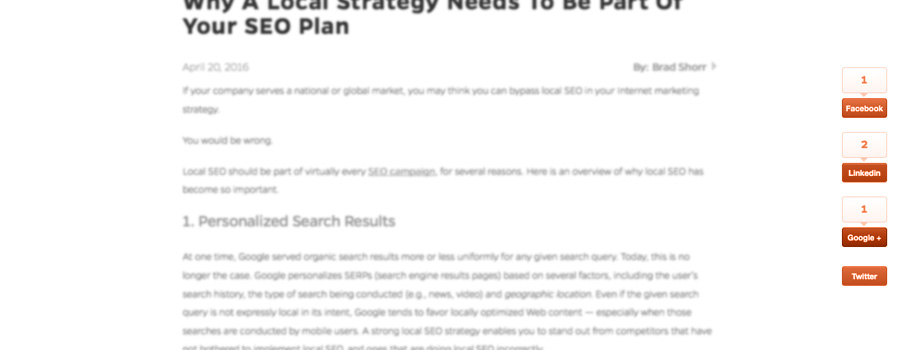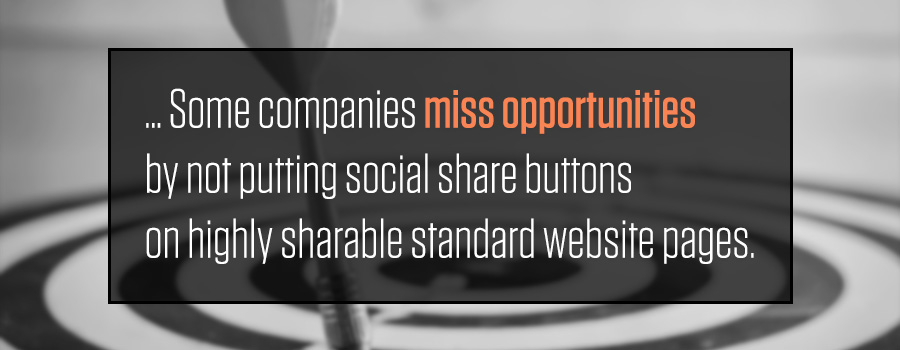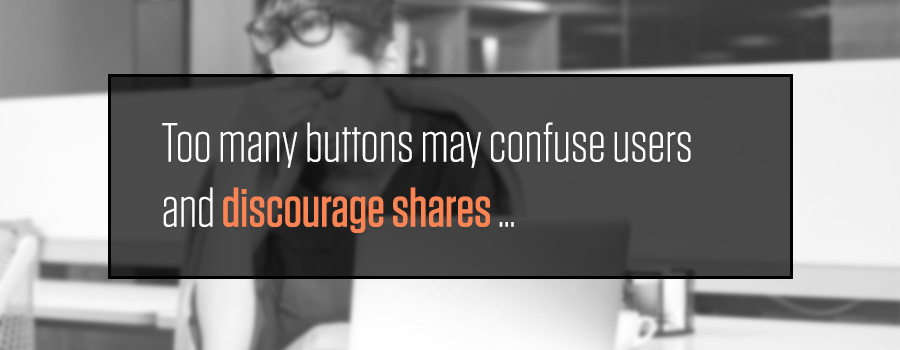
Why Social Share Buttons Improve SEO
April 26, 2016

Displaying social share buttons on blog posts and certain pages of the main company website benefit SEO in two important ways:
- Encouraging and making it easy for readers to share website content drives relevant traffic to the website. As these shares are re-shared by social media connections, the ripple effect widens (sometimes rapidly and enormously) — this is what most people think about when they say something has gone “viral.”
- As more relevant people read website content, more opportunities for natural links arise, as these readers mention and link to that content on their blogs and websites.
Advanced Techniques for Improving Natural Links With Social Share Buttons

Natural linking through social shares is often overlooked. Here are ways to generate more link opportunities.
- Place social share buttons at the top and bottom of the content. Careful readers will share content only after reading it thoroughly; their natural reaction is to click share buttons at the bottom. Scanners and skimmers, however, are more impulsive and may be ready to share content based on the title, a few sentences, and the reputation of the writer and/or website. For them, top-positioned share buttons are ideal, as they may not have the patience or level of interest to scroll down the page to find them.
- Don’t display social share buttons on every website page. Overdoing share buttons diminishes their impact. Few people — none, realistically — are going to share a company’s contact page or terms of service page on Twitter or Facebook. Even standard website product and service pages are unlikely to be shared unless they contain a lot of useful information and are written conversationally rather than salesy.
- Display social share buttons on sharable website pages. On the flip side of this issue, some companies miss opportunities by not putting social share buttons on highly sharable standard website pages. Great candidates:
- Job postings — People love to alert their social communities to job opportunities. These shares could lead to links from relevant industry blogs and websites.
- Case studies — People love sharing examples of great work and success stories. Using a storytelling style and providing ample data make case studies enticing for industry bloggers to mention in posts about your products and services.
- Research findings, technical details — Along the same lines, industry publishers are always on the prowl for facts to support their editorial and informational blog posts. Make it easy for people in the industry to share your research data!
- Display the correct share buttons. The big ones — LinkedIn, Twitter and Facebook — should always be displayed. Great photography or imagery in your content? Be sure to add a Pinterest share button. If SEO is in your mix, a Google Plus share button still has value. Other options worth considering, depending on your niche: Buffer, Reddit and Evernote.

A final thought: Review analytics data to see which social sites are referring traffic. This doesn’t correlate to link creation, but does give you a sense, over time, of which social share buttons to prioritize and deprioritize. Too many buttons may confuse users and discourage shares; displaying the wrong share buttons won’t help your traffic or link-building efforts. The challenge is to find the right combination.
We deliver! Sign up and we’ll send our valuable content right to your inbox.




